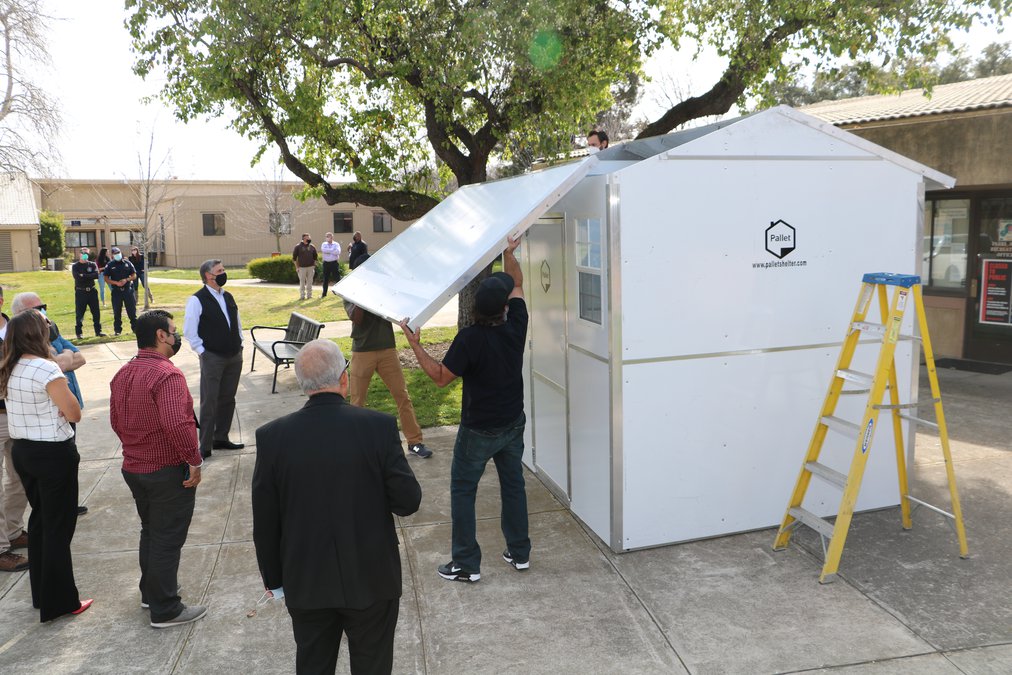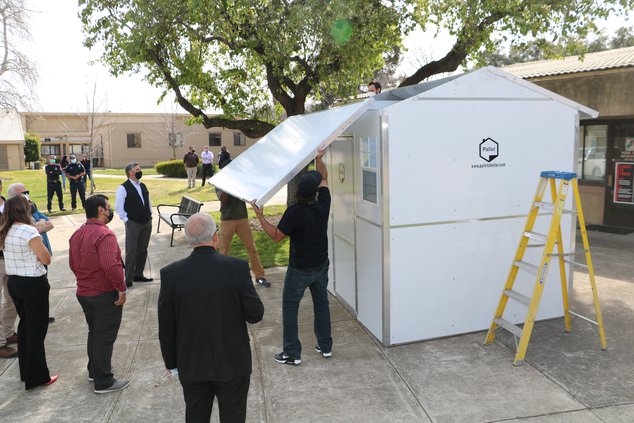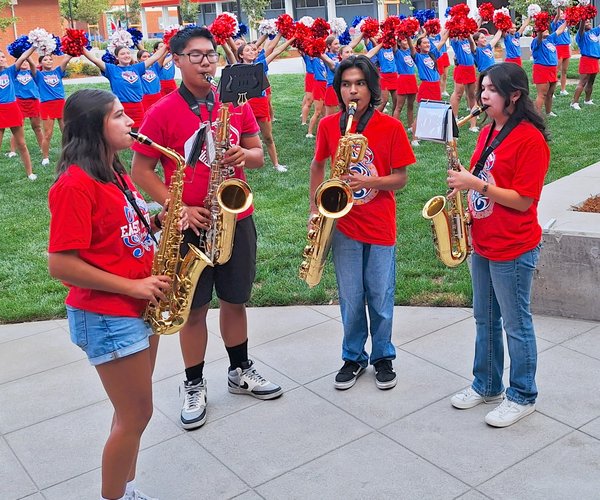They will be, without a doubt, the smallest houses ever allowed in Manteca.
The dwellings are less than one-tenth the size of the least expensive housing unit currently in escrow — a 786-square-foot single-wide mobile home that sold for $79,900 in the mobile home park southeast of the Lathrop Road and Highway 99 interchange.
At 64 square feet, the units don’t seem like much. They are constructed with aluminum frame components that can be assembled in less time than it takes to put a pre-fabricated shed together.
The units that sleep two people have a cooling and heating unit, electrical outlets, lighting, storage space under the beds, and shelving. They also lock.
That last feature is a key component to make the $10,000 plus investment per micro-house worth it.
Being able to feel secure to concentrate on taking the road back from the streets is an important psychological barrier those that have been homeless for long periods of time crashing on the streets or breaking into empty buildings have to clear.
It is why 16 such units are included for transitional housing in a proposal to establish a homeless navigation center and drop-in shelter on the back half of 8 acres along South Main Street between Funsten Flooring and Extra Space Storage.
Plans for the navigation center as affordable housing similar to the Juniper Apartments in Atherton Drive that will face South Main Street are being vetted during a community workshop Tuesday, Aug. 26, at 6 p.m. at the Manteca Transit Center at 220 Moffat Blvd.
You can also participate in the meeting via Zoom by going to //bit.ly/3maTgBb (The meeting ID is 869 7184 1361).
The envisioned housing along South Main — three stories of subsided apartments that are part of free-standing four-story complexes with commercial space as well as studio work/live units on the ground floor — isn’t controversial with neighbors, especially those west of South Main Street.
The flashpoint is what is planned on the other side of a 7-foot masonry wall dividing the property roughly in half north-to-south with the intent to allow access only from Carnegie Court from within the Manteca Industrial Park.
Opposition is focused on the 16 tiny homes plus the 283-bed drop-in homeless shelter with separate areas for men, women and families as well as support facilities including a dining area/activity room, kitchen, space for programming to work with homeless to get off the streets, showers, bathrooms, and a dog park.
One of the biggest issues in helping get homeless off the streets is securing cost effective transitional housing while homeless access services to make them employable and to house them initially when they obtain jobs.
Without some form of transitional housing where the homeless can stay while working with social workers and others while they are being helped, it is difficult to achieve results.
To build a permanent structure for such housing that is similar to an apartment complex can run from $200,000 to $250,000 per unit. The completely equipped Pallet Home delivered and assembled cost $10,000 a unit. There is a larger 100-square-foot Pallet Home that can sleep four and are typically used for families and costs more.
Having a place to safely secure their belonging is a big issue with many homeless who are living on the streets.
The 700-pound structures take a half hour to 45 minutes to assemble. Once assembled, they can be moved to other locations as they are designed to be able to be picked up by a forklift.
The aluminum frame secured fiberglass reinforced plastic panels effectively reflect the light and heat. Also, in the rare event of damage, panels can simply be removed and replaced.
Units have withstood 120 mph winds.
They can go on any level surface — parking lots, dirt fields, unused grassy areas, and such.
The only site work connected directly to the structure being functional is the fact every unit needs a dedicated 120 amp service.
The Spartan design is on purpose. That’s because by simply addressing basic needs while the homeless are “stabilizing” so they can get on their feet and returning to work, they don’t get too comfortable.
Typically homeless will stay in one of the units three or six months before they have saved enough money to secure their own housing.
The units are easy to clean as they can simply be hosed down inside and out.
To contact Dennis Wyatt, email dwyatt@mantecabulletin.com






